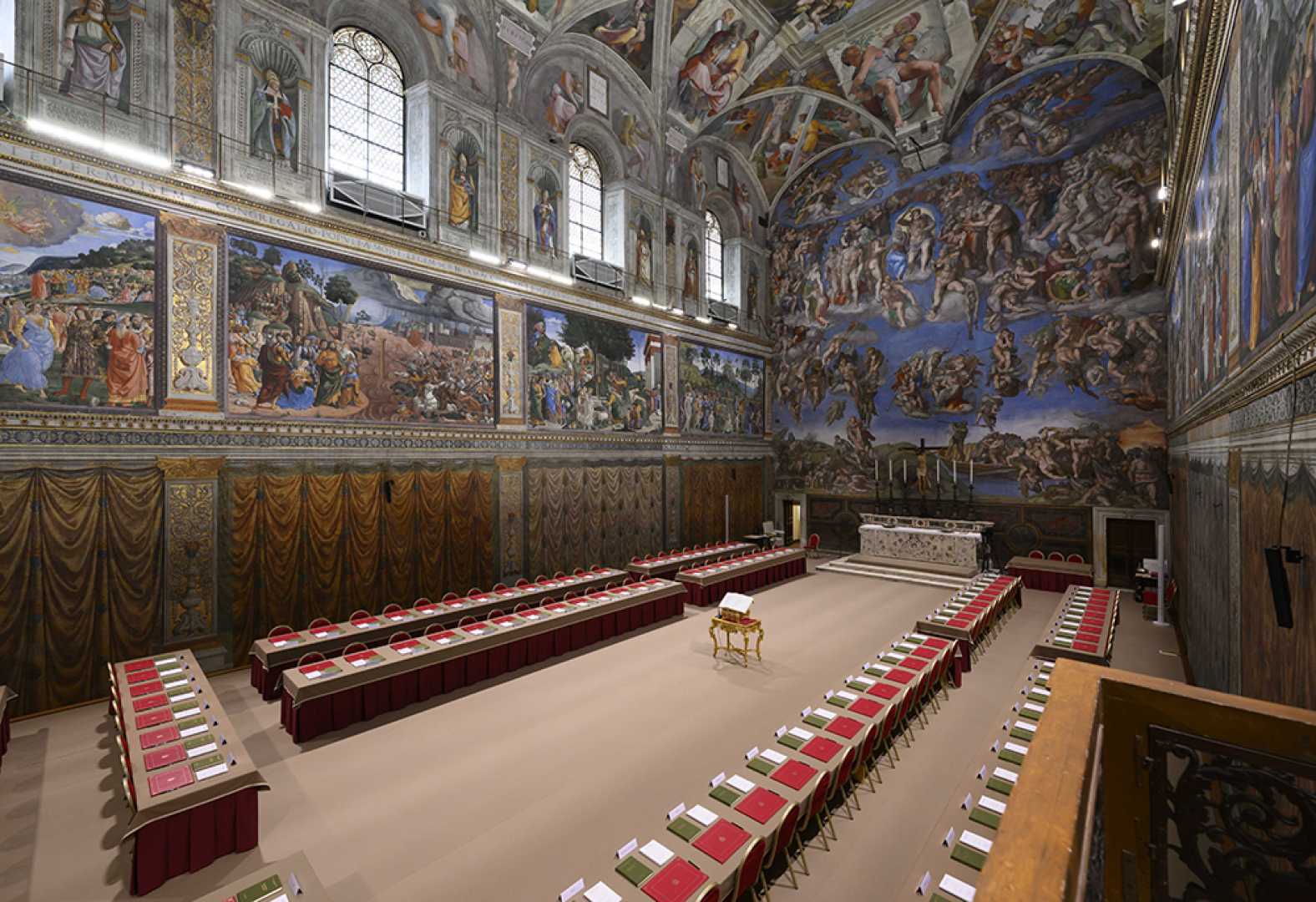World
Sistine Chapel Prepares for Upcoming Papal Conclave on May 7

VATICAN CITY, Vatican
The Vatican’s Sistine Chapel is set to welcome 133 Cardinal electors for the conclave to elect the 267th Pope, beginning May 7. The Holy See Press Office released images and videos of preparations on Saturday.
On Friday, workers from the Vatican’s fire brigade were observed atop the chapel’s roof installing a chimney. This chimney will emit black smoke if at least 89 Cardinals cannot reach a consensus on the next Pope. Conversely, white smoke will signal a successful election.
The conclave will commence at 10:00 AM on May 7 in St. Peter's Basilica with a votive Mass, Pro Eligendo Romano Pontifice, where Cardinals will seek guidance from the Holy Spirit. Later that day at 4:30 PM, they will pray the Litany of the Saints in the Pauline Chapel before proceeding to the Sistine Chapel.
During the procession, each Cardinal will take an oath to fulfill the responsibilities of the Pope if elected, and to keep details of the election confidential. The ceremony will conclude with ‘extra omnes’ announced by the Master of Pontifical Liturgical Ceremonies, which sends non-electors out of the chapel.
Following this, a meditation will be held, and voting will begin that evening. The first ballot is set for Wednesday, May 7. Over the following days, voting will occur four times a day. All ballots are burned and the resulting smoke from the chimney will indicate the status of the election to the public.
The conclave will last until a candidate receives two-thirds plus one of the votes from the electors. If an election isn’t concluded by the third day, the Cardinals can take a day to reflect and pray.
This method of selecting a Pope has remained relatively unchanged for 800 years and is cloistered in secrecy, with Cardinals taking an oath to maintain confidentiality throughout the process. The last three conclaves lasted two to three days.
The smoke signaling the election results has become a part of the tradition. Black smoke indicates an unsuccessful vote, while white smoke announces that a new Pope has been chosen.
There is no limit to how long the conclave can take, but history shows that the process can last from hours to years. The longest conclave lasted nearly three years in the 13th century.












